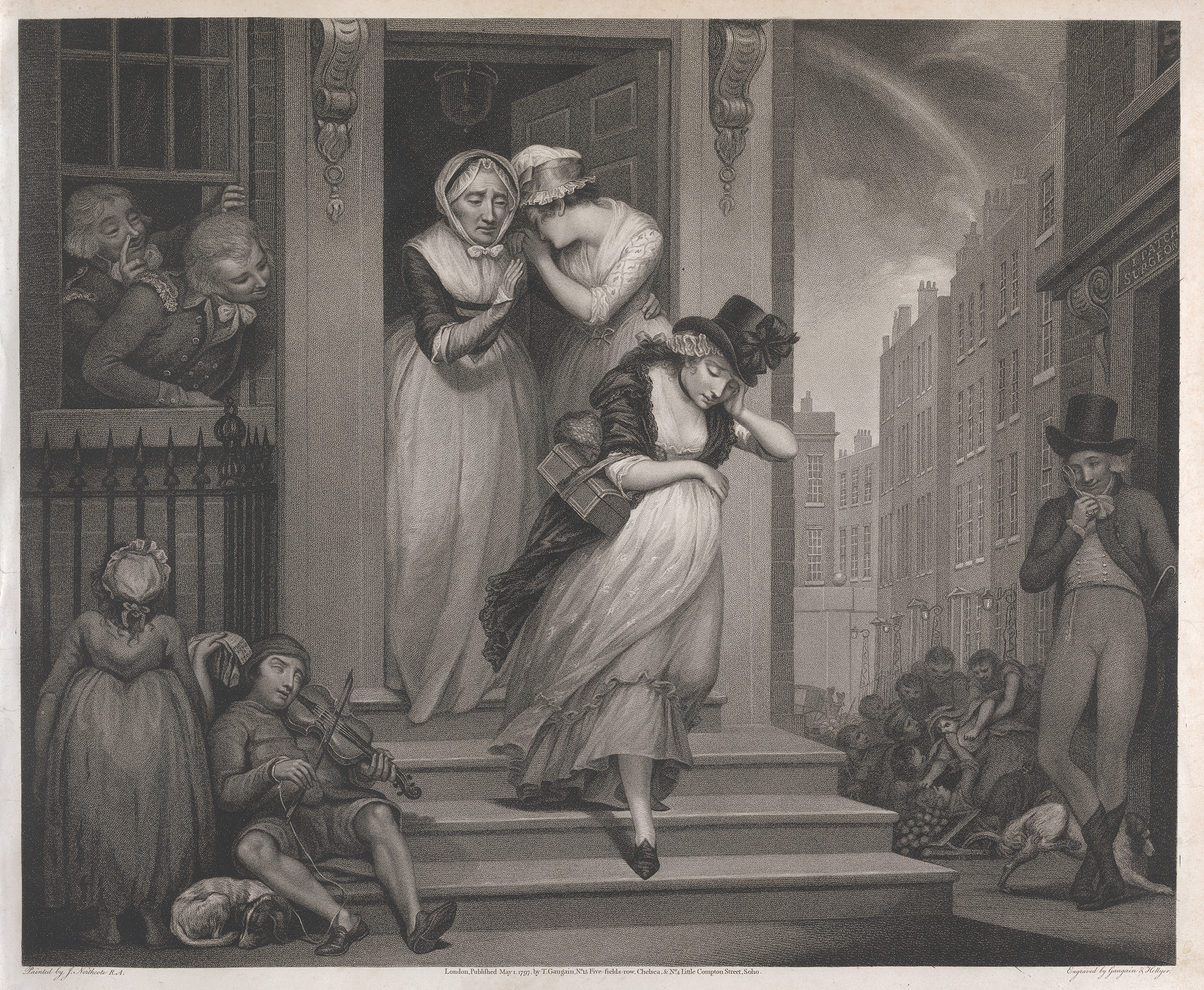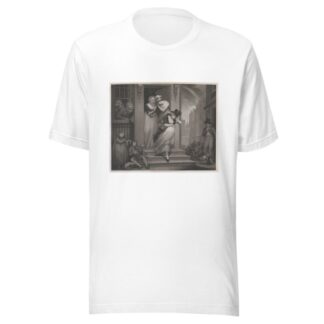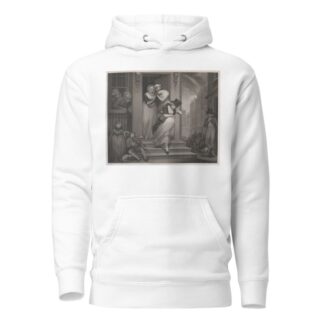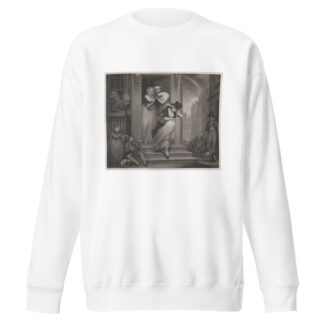Description
The Wanton turn’d out of Doors for Misconduct by James Northcote printed on a Sweatshirt
About the Sweatshirt
Regular fit
Standard length, the fabric easily gives into movement
Comfortable
The fabric and fit of this item are extra comfy
Tear-away tag
Easily removable tear-away tag that allows you to add a custom inside label
This Unisex Premium Sweatshirt has a classic crew neck, flattering unisex fit, and soft 100% cotton exterior.
- 100% cotton face
- 65% cotton, 35% polyester
- Charcoal Heather is 55% cotton, 45% polyester
- Fabric weight: 8.5 oz./yd.² (288.2 g/m²)
- Tightly knit 3-end fleece
- Side-seamed construction
- Self-fabric patch on the back
- Double-needle stitched rib collar, cuffs, and hem
- Tear-away label
James Northcote (1746-1831)
James Northcote RA was a British painter.
Northcote was born in Plymouth, and was apprenticed to his father, Samuel Northcote, a watchmaker. In his spare time, he drew and painted. In 1769 he left his father’s work and set up as a portrait painter. Four years later he went to London and was admitted as a pupil into the studio and house of Sir Joshua Reynolds. At the same time he attended the Royal Academy schools.
In 1775 he left Reynolds’ studio, and about two years later, having made some money by portrait painting back in Devon, he went to study in Italy. On his return to England, three years later, he revisited his native county, then settled in London, where John Opie and Henry Fuseli were his rivals. He was elected associate of the Academy in 1786, and full academician in the following spring. The Young Princes Murdered in the Tower, his first important work on a historical subject, dates from 1786, and it was followed by the Burial of the Princes in the Tower. Both paintings, along with seven others, were intended for Boydell’s Shakespeare Gallery. His enormous Death of Wat Tyler was exhibited in 1787; commissioned by a London alderman, it hung in the Guildhall until its destruction during the Second World War.
Shortly afterwards Northcote began a set of ten subjects, entitled “The Modest Girl and the Wanton”, which were completed and engraved in 1796. Among the productions of Northcote’s later years are the Entombment and the Agony in the Garden, besides many portraits, and several animal subjects, such as Leopards, Dog and Heron, and Lion; these were more successful than the artist’s attempts at more elevated subjects, as was indicated by Fuseli’s caustic remark on examining the Angel opposing Balaam —”Northcote, you are an angel at an ass, but an ass at an angel.” Northcote’s works number about 2000, and he made a fortune of £40,000.
He was elected to the Royal Academy in 1787. He became a corresponding member, living abroad, of the Royal Institute of the Netherlands in 1809. He sponsored the admission in 1829 of Thomas Sewell Robins to the Royal Academy Schools.
Northcote also sought fame as an author, and his first essays were contributions to the Artist, edited by Prince Hoare. In 1813 he embodied his recollections of his old master in a Life of Reynolds. His Fables—the first series published in 1828, the second posthumously in 1833—were illustrated with woodcuts by Harvey from Northcote’s own designs. In the production of his Life of Titian, his last work, which appeared in 1830, he was assisted by William Hazlitt, who previously, in 1826, had given to the public in the New Monthly Magazine his recollections of Northcote’s pungent and cynical “conversations”, causing some problems for the painter and his friends.






Reviews
There are no reviews yet.